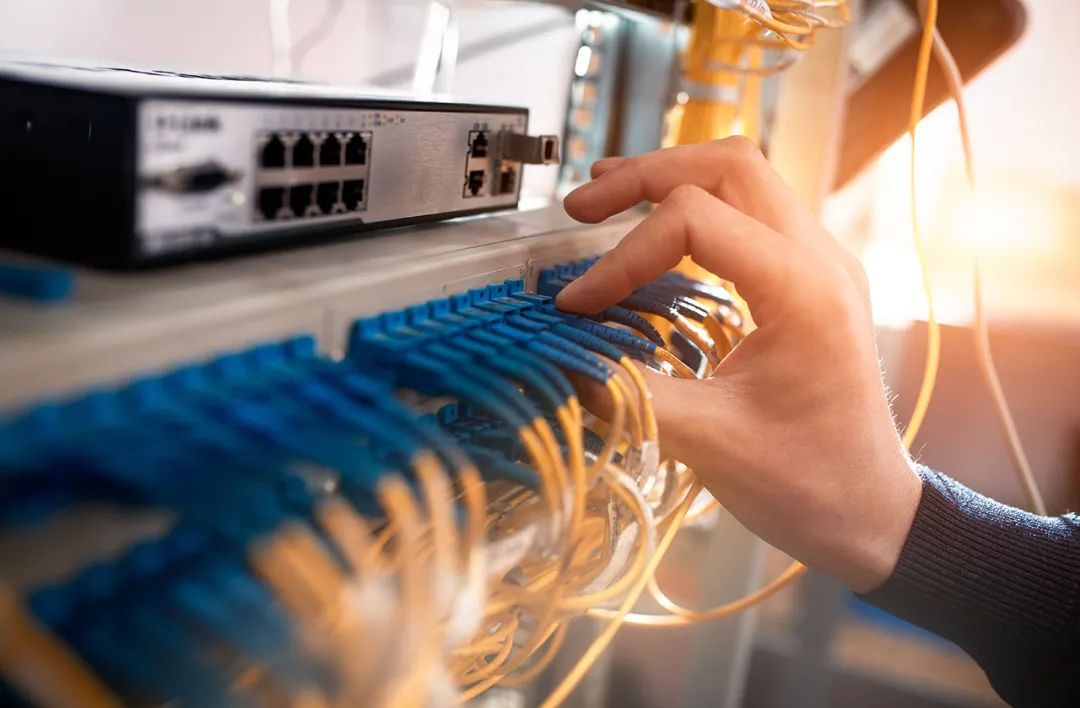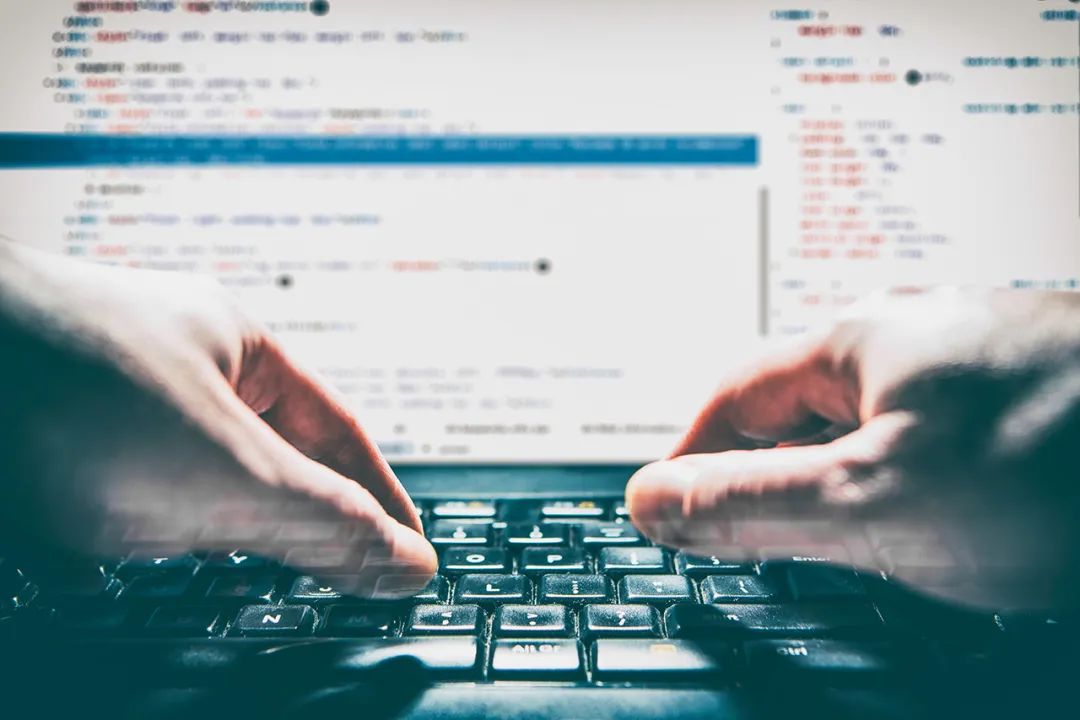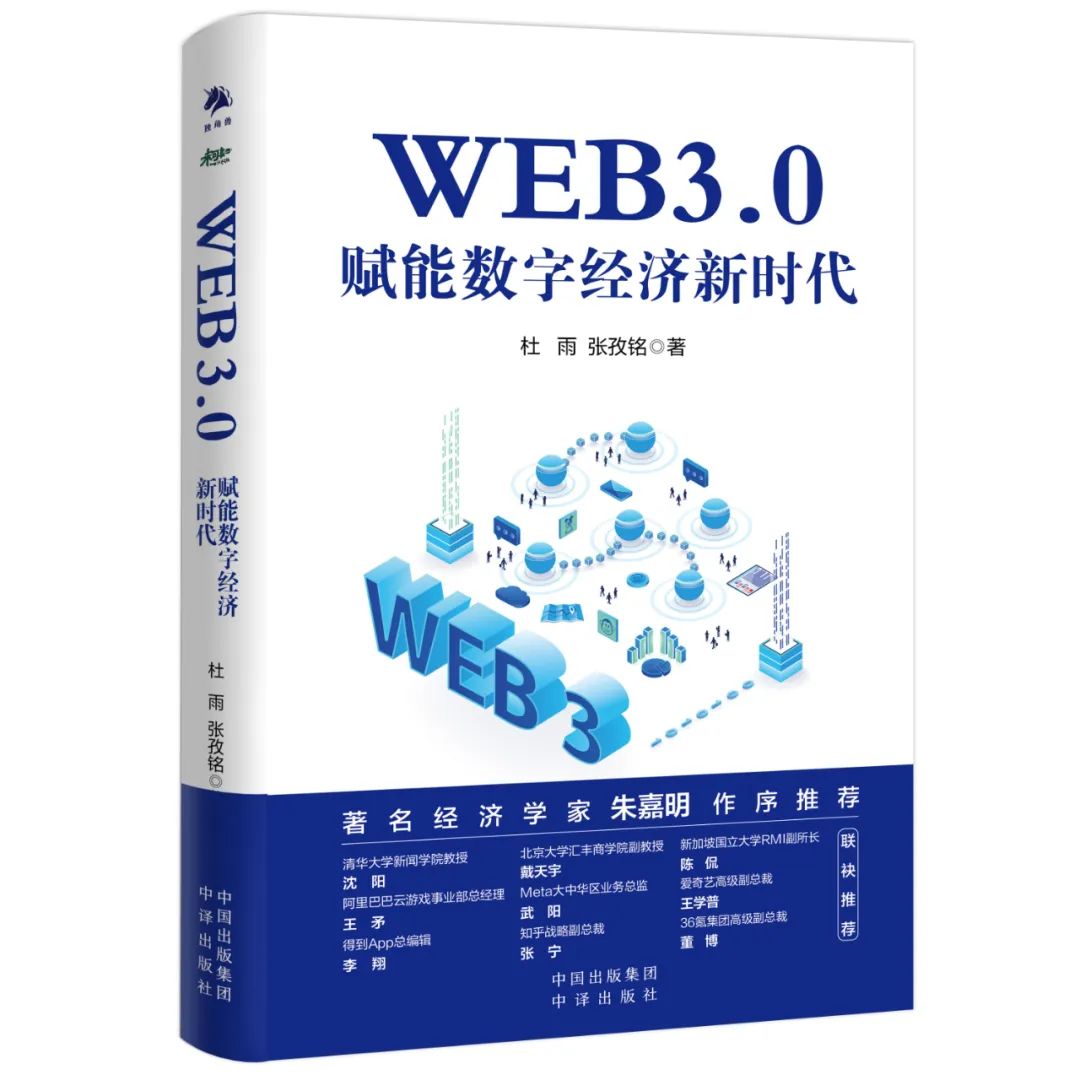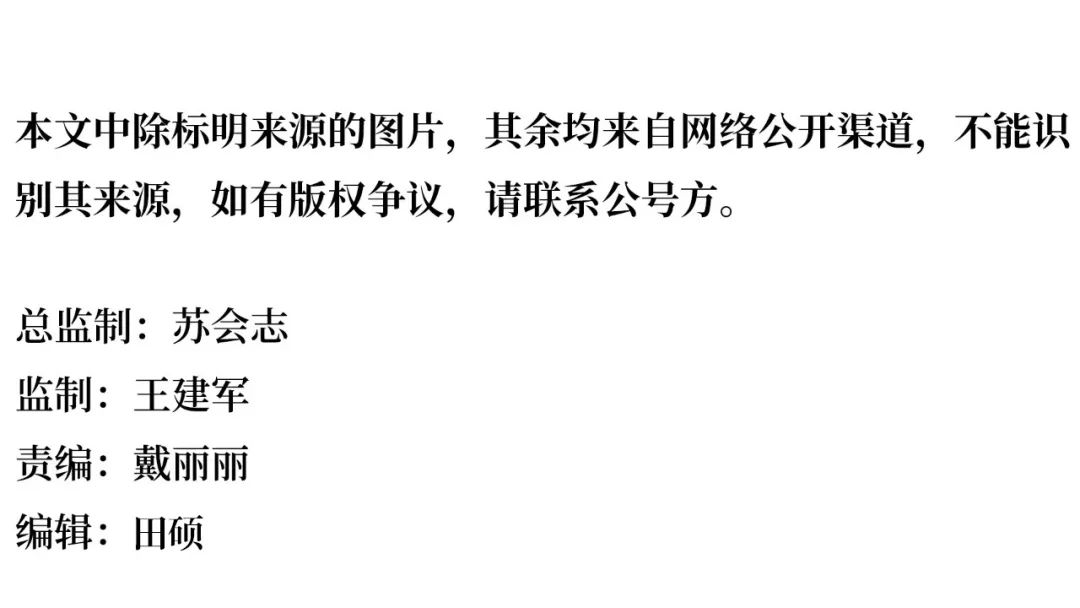What is the web3.0 of the US member of the United States who shouted "to ensure that it happened in the United States"?
Author:Look at the think tank Time:2022.09.06


This year, web3.0 was in the Internet circle.
From web to web broadband, mobile Internet, industrial Internet ... Now, the connotation of the web3.0 has changed significantly -it is not only associated with the value of the value of the value, but also redefined by blockchain technology. The next important stage. Patrick McHenry, a Republican member of the United States, said that it must "ensure that the web3.0 revolution occurs in the United States."
So what exactly is web3.0?
How will it change the world this time?
Text | Wang Yiwen Watch Think Tank Observer
This article is an original article on the lookout think tank. If you need to reprint, please indicate the source of the Source of the Source of the Think Tank (ZHCZYJ) and the author's information, otherwise it will strictly investigate the legal responsibility.
1
"Next Generation Internet", appears in a few years
For Web (World Wide Web, Chinese name "Wanwei.com"), people have a common misunderstanding: the same thing is that the Internet (also known as the Internet) and the Wanwei.com (web) is the same thing.

Figure | Figure insect creativity
In fact, they are independent of each other. The Internet refers to the "network interconnection", which is a method that connects the computer network to each other to develop the Internet covering the Internet. Wanwei.com exists on the Internet, which is a collection of countless online sites and web pages. The web server organizes the information organization into a super text of the graphic and text through the super -text mark language (HTML), and jumps from one site to another site. Simply put, Wanwei's network is one of the functions of the Internet on the Internet. The latter can also provide file transmission (FTP), email (E-mail), and remote login (Telnet).
The emergence of the Internet has been 20 years earlier. At the end of the 1960s, the needs of military, academic, and computing have generated the needs of connecting computers through the network. For example, the US military wants to establish a communication network in order to deal with the situation where the command center is destroyed during the war. Scholars It requires more convenient and time -effective academic information exchanges. In the 1970s, several small prototype network systems were successfully developed. They could pass data packets through low -speed telephone lines, such as the French "Cyclades", academic research network "Joint Scientific Research Network developed by the United States and British Post Department "(JANET), etc. Among them, the Aipa.com (ARPN) designed by the US Department of Defense's Senior Research and Planning Bureau has the most influence.
In 1969, Apa.com established a connection between two computers for the first time, which was regarded as the beginning of the Internet. In 1970, Apa, which had the prototype, began to open to the non -military department, and many universities and business departments began to access.
In 1974, the term "Internet interconnection" referred to as "Internet" was released. After that, different network systems were used to transmit information packets (TCP, transmission control protocols), and the address of the organization member machine (IP, Internet agreement). The use of the Internet is fully developed. Since then, Internet has become a special name for the Internet.
In 1989, Tim Bernard-Lee, a British computer scientist Tim Bernas, proposed a concept of shared text, he invented three basic technologies: HTML (hyper-text mark language) formatting network information, URLs (Uniform resource positioning address) Systematic positioning of the webpage, HTTP (hyper -text transmission protocol) regulates computer language for network resource transmission and retrieval. He also wrote the first web editor and server program. In 1990, the first webpage was successfully uploaded. This super -text project called "World Wide Web" (web) achieved a huge mutual exchanges between human beings.
Users and web clients (browsers) can access the web information of different sites through the server and web client (browser), and can also communicate with work and life through the Internet. This has brought great promotion to the commercial development of the Internet, and gradually develops what we are familiar with today.
In the 1990s, major portal websites have entered people's lives. They use pictures and text to attract users to browse, and accept advertising and collect advertising vendors. Starting from the emergence of web, the network has completely penetrated and changed our information communication, business form, financial market, lifestyle and other aspects.
With technological progress, the Internet has also evolved with changes in our needs and uses. Because the Internet has developed in terms of network speed, optical fiber infrastructure and search engines, users' demand for social, music, video sharing and payment transactions has increased significantly. As a result, new applications continue to emerge: social media platforms such as Facebook and Twitter provide users with social functions; data sharing software such as NASPTER meets users' needs for music and videos; Google has provided shortcuts for users to search for massive Internet information; The emergence of electronic payment ...
In 2004, at an internal forum in the IT field, Dale Dougherty, vice president of O'reily Media Inc., put forward the saying of Web2.0 for the first time. He directly described the changes in network use with the concept of numbers, and pointed out that the biggest difference between Web2.0 and the previous is that users can interact with the network. People generally accept and reach consensus -Web1.0 and Web2.0 are the two stages of the development of the Internet: In the era of web1.0, the Internet is a read -only network. Watching and unable to interact; in the era of web2.0, users can not only watch the content, but also publish content. People can express their views and share their lives on different platforms. They can also write entries on Wikipedia and create their own UGC products in various large online games.
After about every few years, a discussion of the "next generation of Internet" will be ushered in. He Baohong, director of the Institute of Cloud Computing and Big Data of China Xintong Institute, summarized it as "seven years of itch", that is, "technology will change once every seven years, and it must be changed. Also change the name. This is a typical investment cycle, and the Internet is completely consistent. "
He Baohong believes that the discussion of the "next generation of Internet" has changed with technological changes. For example, web from the beginning to the web broadband, and then the mobile Internet and the industry Internet ... Some of these Internet development concepts are continuing development, and some are completely different. Because of the universal digital labeling, web3.0 is increasingly used to refer to the next main stage of the development of the Internet.
As early as web2.0 appeared, there were constant people who kept defining Web3.0. This word that has appeared for more than ten years has experienced? What changes have experienced?
2
Connotation expansion: from "semantic network" to "centralization"
Beginning in 2006, the Internet raised the first wave of web3.0.
Web's inventor Tim Bernas -Lee believes that HTML is shown to people and cannot be understood by the machine. The data should be given to the meaning and developed an intelligent, more automated Internet application, and the web3.0, that is, semantic web -every computer connected to the Internet can not only understand words and concepts, but also It can also understand the logical relationship between them, so as to liberate people from heavy network information search.
Figure | Figure insect creativity

Yahoo founder and CEO Yang Zhiyuan described web3.0 from the perspective of software. He believes that "it is not necessary to be computer scientists to create a program. It will deepen, it is a real public carrier ... professional, semi -professional and consumers' boundaries are becoming more and more blurred, creating a network effect of a business and application. "
Reed Hastings, the founder of American Video Website Nei Fei, emphasized the bandwidth and speed. It should be a 10M bandwidth, full video network, which feels like web3.0. "
Eric Emerson Schmidt, a former CEO of Google, has also proposed a concept of Web 3.0, which now looks similar to "cloud computing". He believes that web3.0 refers to a collection of many applications. These applications are relatively small, their data are stored in the form of clouds, operating fast, customized, and can run on any device.
At that time, China was also very concerned about web3.0. The well-known domestic IT publication "Internet World" published an article entitled "The Coming of the WEB 3.0 Age" in 2006. In the article, the "initiative" and "digital maximization", and "Multi-" (Multi- Dimension) as the main feature of Web3.0.
In 2007, "WEB3.0" also appeared in the CCTV entrepreneurial show "Win China". A entrepreneur described his "Web3.0 project" to the business leader here: it will be committed to changing existing advertising Stir -tedious, and then use knowledge and entertainment to guide consumers' consumption behavior in real life. At that time, the people at the time were still accepted by Web2.0. In addition to technical restrictions, the audience seemed to be confused on this way to use the content form and algorithm innovation.
At this stage, web2.0 is in a rising period of development. Some problems and disadvantages have not yet been exposed. In addition, the development of technology has not made great breakthroughs. From the organization to individuals to actively embrace it. Web3.0 gradually disappeared into the public's vision.
Until the blockchain appeared, it caused a wave of heated discussions on 3.0. Blockchain is a distributed ledger technology, which is characterized by decentralization and openness. It allows everyone to participate in the database records and has the characteristics of irreversibleness. This special storage structure can ensure that the data cannot be tampered with once it is entered. In 2014, Ethereum founder Gavin Wood (why do we need web3.0? " "It is pointed out that web3.0 is a brand new Internet operation mode -information will allow users to publish, custody, non -traceable and never leaked, that is," decentralized network ". In other words, users can better have and control the content created and owned by themselves without using other agencies.
Why can "decentralization" define Web3.0 newly defined?
First of all, web2.0 developed to the later period, and the problem of security and monopoly became more and more prominent. For Internet users, everyone will leave their own traces, that is, data. At present, the collection and management of these data are almost mastered by several Internet "giants". On the one hand, users lack the control of their own creation content, and their enthusiasm will not be too high to participate in effective content, which will seriously limit the richness of network content; on the other hand The platform will master huge power, which eventually leads to the platform monopoly. How to protect users' rights and interests, but also innovate a new service method, becoming a highly concerned topic.
Secondly, the development of technology has gradually realized or even subverted the previous "imaginations": we have a system that can operate on multiple terminals; communication from 2G to 5G; cloud computing -based de -service -oriented IT calculations The way of force is widely used; the media revolution based on information flow and algorithms has occurred ...
Therefore, from technological innovation to social development, the Internet has come to an inflection point again -from the information Internet to the value Internet.
He Baohong proposed that there are two views at the moment: one is to continue to do the information Internet, such as 3D Internet represented by VR, AR, etc.; the other is to turn the Internet to carry the value of the Internet, carry wealth, "Web3. 0 ".
Obviously, web3.0, which has outstanding characteristics of "decentralization", has been favored. In December 2021, the U.S. Congress held a number of encryption industry hearing. Republican lawmakers Patrick Mchenry said that "ensuring that the web3. 0 revolution occurred in the United States." In March of this year, Yao Qian, director of the Science and Technology Supervision Bureau of the China Securities Regulatory Commission, also mentioned in an article, "Web3.0 is expected to greatly improve the existing Internet ecosystem and effectively solve the monopoly and lack of privacy protection in the WEB2.0 era. Algorithms do evils and other issues ... The construction of web3.0 requires standards and guidance for the top -level national design and the governance framework of wide and strict governance. "
3
How will it affect our lives?
On the basis of Wood, Eshita, a researcher at the research institution MESSARI, further summarized the characteristics of the three development stages of Web, that is, web1.0 is "readable", web2.0 is "readable+ available+ "Read+WRITE", web3.0 is "readable+write+write+own". This version has been widely spread and has become the mainstream of web3.0.
Figure | Figure insect creativity
With the support of the "decentralization" concept and technology, the power that originally belonged to the Internet service provider was put on the user's hands. In other words, users have their own autonomy of identity, data, and algorithms, and no matter who they are, as long as they participate in contributions, construction, and development, they will have the opportunity to obtain benefits.

At present, the decentralized applications (DAPP) of various web 3.0 eras have appeared. For example, Metamask, it can expand the browser's program, just log in once, you can seamlessly connect each DAPP. There is also a bra browser, which can block advertisers and trackers. It is 3-6 times faster than the browser on the market, and you can use the browser's extension wallet to directly reward the blogger you like.
These decentralized applications are like universal Lego bricks. Each user who controls its own Internet data and assets can use these building blocks to spell out its own online world.
Web3.0 will bring us the following changes:
*Emphasize that users have autonomy
Web3.0 is centered on users, emphasizing that users have autonomy. Decentralized identity is a decentralized identity system based on blockchain technology. It can avoid the control of identity data by a single centralized institution and use the households to manage their own identity. For example, the identity information shared with and what use of the user is determined by the user. Only personal data authorized by the user can be legally used.
Take your authentication as an example. For example, the system asked if you know what your ID number is? You can neither tell the specific number of the system, but you have to convince the system to believe that you know your ID number. What should I do? When your ID number is set to a password of a password box, and the system also knows that the password of this password box is your ID number, you just show that you can smoothly open the locking password box in front of the system. That's fine. At this time, the system can believe that you really know your ID number, and you will not know the specific number of the ID number. In 2021, the new crown digital certificate issued by San Marino contains two QR codes, one can be verified in accordance with the EU inspection standards, and the other is a "general" certification based on blockchain technology, which is a unique and non -repeated certificate. It can support verification from various other institutions.
Note: The new crown digital certificate covers the situation of SARS-COV2 vaccination, previous infection or detection results as negative. The validity period of the first vaccination of the first vaccination is 1 week from 15 days, or the vaccine vaccination cycle is 9 months.
*Decentralized finance
In the web 3.0 era, no centralized institutions can realize services such as loans, insurance, stocks, wealth management, foreign exchange, derivatives transactions in traditional finance. This decentralized finance is referred to as DEFI (Decentralized Finance).
For example, if you want to remit money from a bank from a British bank, you must not only fill in a lot of forms, but also need to apply for additional amounts to exceed the limit. And these remittances are not allowed in time. Currency settlement that uses blockchain for encryption can complete transnational remittances within 15 minutes, and because there is no centralized institution withdrawing profits, it only needs to pay the fee consumption fee.
*The value of digital assets cannot be underestimated
The value registered and passed on web3.0 can be digital currency or digital assets. Distributed ledger technology provides unique proof of equity for digital assets. The distributed consensus algorithm of one -person records and multi -person supervision review eliminates the problem of fake digital assets and "double flowers" without credible middlemen.
Note: Double flowers, that is, dual payment, refers to in the digital currency system, due to the replication of data, the system may have the same digital assets due to improper operation.
Digital assets can also be unlocked, such as intangible homogeneous tokens (NFT), which have the characteristics of verification, uniqueness, non-segments, and traceability, which can be used to mark ownership of specific assets.
NFT is different from Bitcoin. There is no difference between each Bitcoin, and the value is the same, and it can be divided as unlimited as gold, and a NFT represents a specific thing: it may be a video, a painting, or even a word. Different, it cannot be divided. In addition, the application scenarios of NFT will also be continuously expanded. From NFT, which was originally in the form of art, extended to multiple fields such as games, identity certificates, domain names, and intellectual property rights.
*Reconstruction organizational form
Web3.0 will reconstruct the organizational form and business model of the Internet economy. Web1.0 and Web2.0 are based on the Internet platform, known as the "platform economy".
Web3.0 uses distributed ledger technology to build an open environment that inspires and compatible: no board of directors, no company articles of association, no hierarchical system, no centralized manager, relying on democratic governance. Use smart contracts to automatically execute. This decentralized autonomous organization is called "DAO" (DAO "(distributed autonomous organizations). According to different needs, DAO projects have different types according to different needs. For example: protocol DAO, investment -type DAO, fund -type DAO, social DAO, collection DAO, media DAO, etc.
Bankless DAO is the representative of the media DAO. It originated from a media that was founded in 2009. There are various kinds of guilds on it, such as: Writing Association, Translator Association, Researcher Association, etc. Each Association has a focus field. If you want to be a member of a guild, you need to improve your activity to obtain the recognition of others. Members can discuss various proposals on the community channels, and then vote for all Bank holders to determine the development direction of the community development direction. Essence
Above, we can see the appearance of web3.0 from it. Do you think that "blockchain", "digital assets" and "decentralization" sound like another concept of fiery fiercely — "Yuan Universe"? According to reports, the Yuan universe mainly refers to a decentralized virtual world that has a complete economic system and has always run uninterruptedly. Its core is the carrying of virtual assets and virtual identities. It can provide users with rich consumption content, fair creative platforms, reliable economic systems and immersive interactive experiences.
In summary, the industry generally believes that the relationship between Web3.0 and the Yuan universe is complementary. The web3.0 technology system with the blockchain as the core will promote the formation of the digital ecology of the Yuan universe. On the contrary, the Yuan universe can be regarded as a landing scene in the era of the web 3.0 era. (Uncle Ku has previously analyzed the Yuan Universe, click to read it) 4) 4) 4) 4) 4) 4
To seize the opportunity and prevent risks
Last year, a team named "Burntbanksy" burned the world -renowned street artist Banks "Morons" in a park in New York.
Before being burned, the work had been made into NFT. "Burntbanksy" described that they are producing a new form of art by creating this unique NFT -let the original physical work converted into digital art. According to the BBC, the Digital version of "Stupid" was eventually sold at a high price of 380,000 US dollars (about RMB 2.47 million). And just the previous year, the blockchain company Injective Protocol, a blockchain company planned for this painting activity, took the painting at a price of $ 95,000.
This painting depicts a auction. The work that is being shot is written, "I can't believe you, this idiot actually bought this thing." At that time, the NFT's "carnival" caused a lot of controversy, and many people pointed out as a gimmick for money. If you think about it carefully, the essence of the commodity economy behind it is self -evident.
Note: The author of this painting British graffiti artist Bankerxi, everyone is also familiar. His other famous masterpiece "Girl and Balloon" has been staged on the auction room and was automatically cut into fragments after being shot at a high price. The drama.
In the face of the current technological innovation of concepts, we have to brighten our eyes. At present, the development of web 3.0 around the world is still in the initial stage, and the theory and technical framework are not very complete. We must seize the opportunity and prevent risks.
*There is still a long distance from mainstreamization
It can be said that now we are far from entering the world of web3.0, and there is still a long distance.
The first is the user experience. The current decentralized application not only requires users to use wallets, but also remember very complicated and difficult technical concepts such as private keys, addresses, GAS fees, and cross -chain. Judging from the feedback from existing users, the experience is generally poor.
It is convenient to experience Web3.0 through the web browser. During the interaction, the CHROME plug -in wallet will pop up the confirmation box. After confirmation, the transaction can be executed, but it is not fast in terms of speed. The progress of the mobile terminal is worse, because the operational troubles and development costs are high, many applications have not been launched for the time being, and some need to switch between multiple DAPPs.
Followed by safety risks. Because the development cost is expensive, most of the successful development of DAPP will only put a few code on the blockchain. Others are still on the cloud server, and there are still great storage risks.
*There are many speculation and a huge challenge for supervision
Some people in the industry pointed out that the concept of Web3.0 is currently risky. "Web3.0, which emphasizes personality, may be more difficult to develop. Especially in the past two years, a large number of coins speculators make the concept of web 3.0 crooked, and we can't accept it."
It is true that the web3.0 technology is conducive to promoting the development of the digital economy, but at the present stage of its full picture, the relevant concepts are also easily used by hype. For example, in the event of embedding NFT into financial properties, using it instead of the value of some financial products, speculators may use its fictional value to perform some speculative speculation and illegal transactions.
At the same time, web3.0 cannot be separated from the blockchain and cryptocurrencies, and many areas are closely connected to finance. Decentralization and bypassed supervision have challenged their safety supervision. What should we think of various digital assets in the web3. 0 era, are they stocks, bonds, or digital products? How to protect users who do not have relevant financial knowledge to prevent them from being deceived? This is a major issue in front of countries.
*"Decentralization" may be too early
In the web3.0 world, decentralization is not an absolute concept. Some products still rely on monopoly to capture the income of users' contributions. Even as a public blockchain platform, Ethereum itself has a team of core developers, and their decisions can still largely affect the platform's rules.
The law of technological development is also the same. After a technology is opened, it will inevitably lead to a centralized platform. The rise of web3.0 companies just form a new center. Looking further, the power of web2.0 comes from capital, and the power of web3.0 comes from computing power. The two are actually the same thing.
At the same time, some people think about whether it is necessary to decentralize? Compared with centralized servers, the performance of public blockchain is poor and cannot bear large -scale commercial applications. Ordinary users care more about convenience, not decentralization.
In summary, huge innovation occurs more in terms of infrastructure, which is a slow and unsophisticated process for most people. If the change of technology is inevitable, then better understanding it will not be swept by the wind.
*Intern Yu Weiyi also contributed to this article.
Reference materials:
1. "Web3.0: New Era of Empowering the Digital Economy" | Du Yu, Zhang Ziming. Chinese Translation Press .2022.06
2. Web3.0, why is it "the future of the Internet" | Beijing Think Tank
3.Web3.0: a concept game | Pin play .2022.07.21
4. San Marino approved the National Green Pass, allowing free travel | PR News News Agency .2021.07.08
5.1994 China's "opening up of the world" | People's Daily .2014.04.15
6. Xintong Institute He Baohong: We are in the "key point" of the next generation of Internet cycle | Beijing News. 20122.08.04
7. Yuan Universe is a web3.0 digital ecology with blockchain as the core | China Blockchain Technology and Industrial Development Forum .2022.03.02
8. Web3.0: How to install new wine | Economic Observation News .2022.03.20
9. Yao Qian: Web3.0: The new generation of Internet that is getting closer | "China Finance". No. 6, 2022
Uncle Ku Welfare
Uncle Ku's book is always there! Chinese translation publisher provides Uncle Ku with 3 "Web3.0: New Era of the Digital Economy" to enthusiastic readers. From web1.0 to web3.0, we have experienced the transformation from only reading information to reading and writing information, and then to have the Internet itself. In combination with vivid metaphors and interesting cases, this book is based on the Panorama of Web3.0, which is concerned about the future of the Internet practitioners, investors, entrepreneurs, regulators, and Volkswagen who are interested in this. Please comment under the article that the top 3 (more than 30) who likes the highest likes will get a book.


- END -
The 50th "Statistics Report of the Development of China's Internet Network" was released
Source | China Internet Information Center CNNICOn August 31, the China Internet Network Information Center (CNNIC) released the 50th Statistical Report of the Development of the Internet of the Inte
Jinjiang's "core" appeared in the Haichuang Club

Jinjiang News Network June 21 News Recently, the 20th China Strait Innovation Proj...